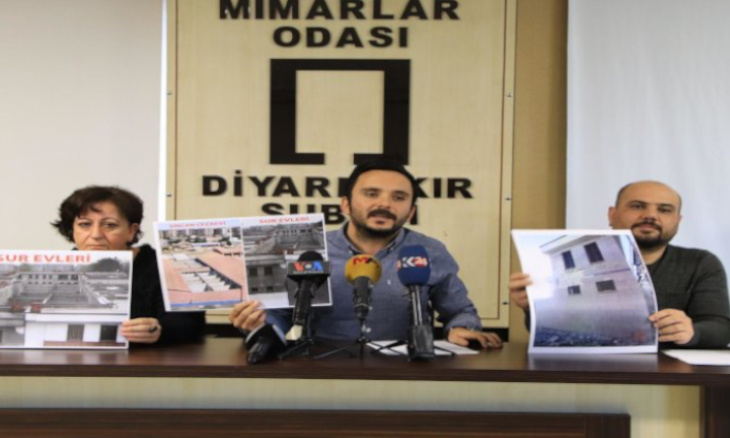Illegal buildings being constructed in historic Diyarbakır Sur district
The Diyarbakır Chamber of Architects has determined that a large number of buildings are being illegally constructed in certain neighborhoods of Diyarbakır's Sur district, which was subjected to massive destruction in 2015 after a peace process between the Turkish government and the Kurdistan Workers' Party (PKK) collapsed, resulting in heavy skirmishes between PKK fighters and Turkish security forces that left a large section of the district in ruins.
Duvar English
The Diyarbakır Chamber of Architects has determined that a large number of buildings are being illegally constructed in certain neighborhoods of Diyarbakır's Sur district, which was subjected to massive destruction in 2015 after a peace process between the Turkish government and the Kurdistan Workers' Party (PKK) collapsed, resulting in heavy skirmishes between PKK fighters and Turkish security forces that left a large section of the district in ruins.
“We have determined that there have been infractions in the obtaining of the building licenses for 181 faux-basalt buildings in the neighborhoods of Fatihpaşa, Hasırlı, and Dabanoğlu. The projects were prepared by an architect that does not have a project drawing license,” said Diyarbakır Chamber of Architects President Şerefhan Aydın.

The neighborhoods are three of six in Sur that have been illegal to enter since 2015 when the conflict between the PKK and state security forces left much of the area in rubble. The faux-basalt buildings are likely an attempt to blend in with the iconic basalt walls that surround the Sur district, which were built in the 5th century. 'Sur' is the Turkish word for 'castle walls.'
Aydın pointed to a number of what he referred to as illegal practices that have occurred in Sur in the past years, which includes tanks hitting the historic castle walls, the expropriation of the area by the state, the destruction of 250 historical structures, some of which were damaged and some of which were unharmed, the destruction of thousands of homes resulting in the uprooting of tens of thousands of people, the construction of concrete blocks in areas that are considered a protected archaeological site, and the construction of faux-basalt villas.
Though much of the area is sealed off and inaccessible due to the entry ban, topographic photos reveal the widespread destruction in the historic district.
